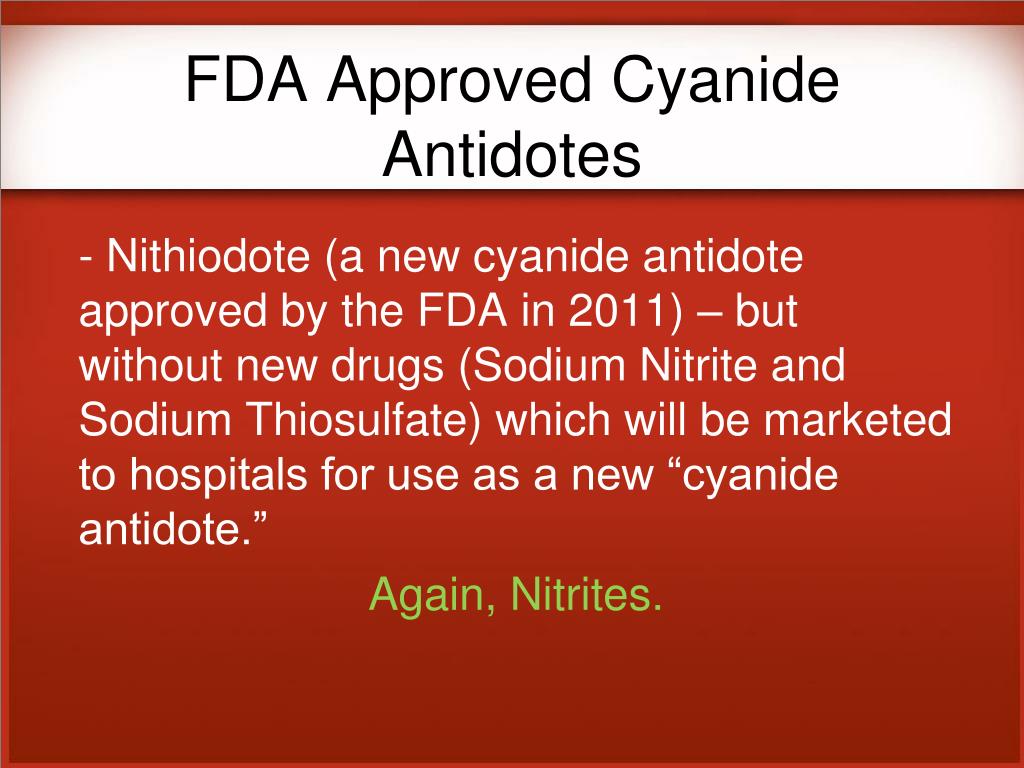


The potential for serious toxicity limits or prevents the use of the Cyanide Antidote Kit, dicobalt edetate, and 4-dimethylaminophenol in prehospital empiric treatment of suspected cyanide poisoning.

The data available to date do not suggest obvious differences in efficacy among antidotes, with the exception of a slower onset of action of sodium thiosulfate (administered alone) than of the other antidotes. Each of the antidotes shows evidence of efficacy in animal studies and clinical experience. This paper reviews preclinical and clinical data on available cyanide antidotes and considers the profiles of these antidotes relative to properties of a hypothetical ideal cyanide antidote. Critical assessment of cyanide antidotes is needed to aid in therapeutic and administrative decisions that will improve care for victims of cyanide poisoning (particularly poisoning from enclosed-space fire-smoke inhalation), and enhance readiness for cyanide toxic terrorism and other mass-casualty incidents. The international medical community lacks consensus about the antidote or antidotes with the best risk-benefit ratio. Cyanide has several antidotes, with differing mechanisms of action and diverse toxicological, clinical, and risk-benefit profiles.


 0 kommentar(er)
0 kommentar(er)
